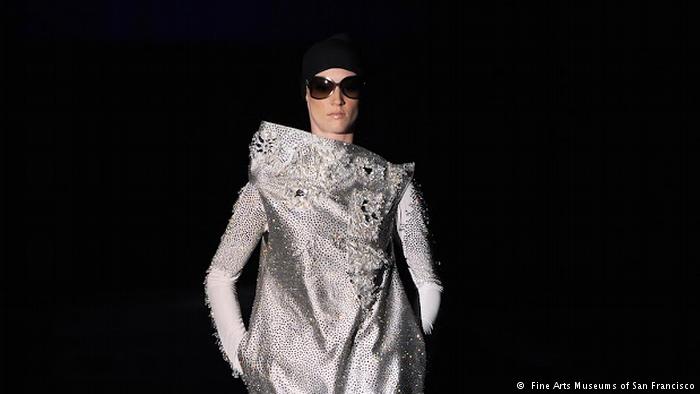‘Veiled, Unveiled: The headscarf’ uncovers head coverings
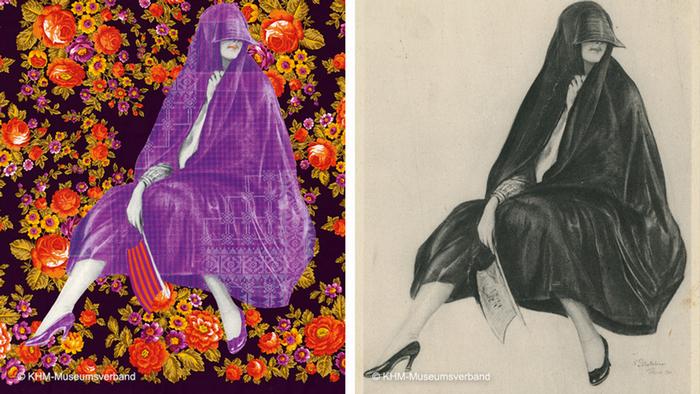
In much of the Western world today, the word headscarf is often automatically associated with those worn by women for religious reasons, especially Muslim women. Yet the idea and practice of covering one’s head with cloth transcends religious, cultural and geographic categories. The show “Veiled, Unveiled! The Headscarf” at Vienna’s Weltmuseum (World Museum) puts headscarf diversity on display.
–
The headscarf in Christianity
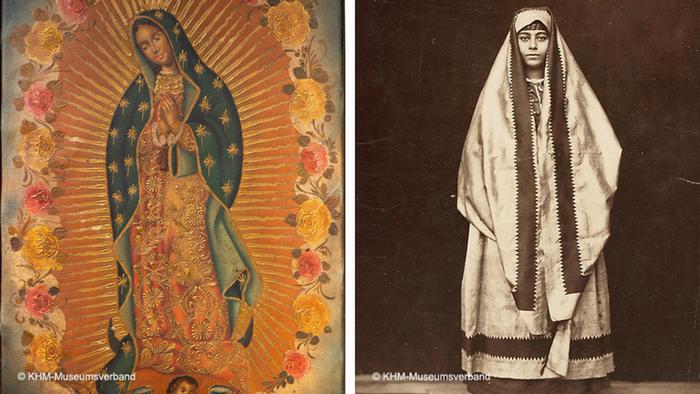
In Christianity the veil is seen as a sign of virginity and modesty. On the left, a 2008 painting of the Virgin of Guadalupe, Mexico’s patron saint, shows the Virgin Mary wearing a starry blue veil. The Bible considers women’s hair immoral and calls on them to cover it when praying — though some wear head coverings at all times. Right, a photograph of a Christian woman taken in Turkey in 1886.
–
Scarves for women and men
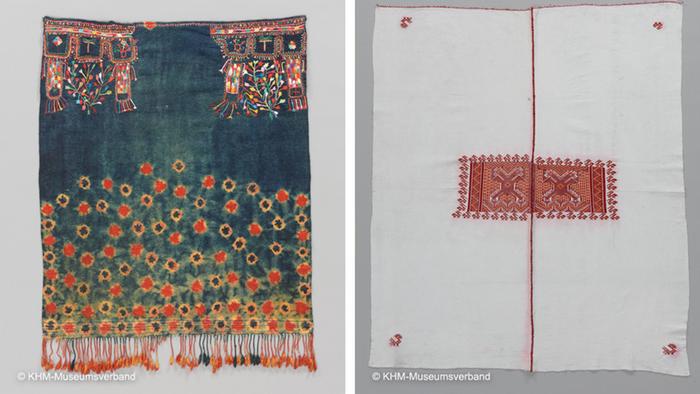
The Weltmuseum’s exhibition includes not only artwork in which the headscarf figures, but also various headscarves themselves from around the world. And it’s not just women’s headscarves being shown; men’s are on display, too. Left is a Tunisian bridal veil from the mid-20th century, while the headscarf on the right with a double eagle design is for male members of a religious order in Guatemala.
–
Desert coverings for men
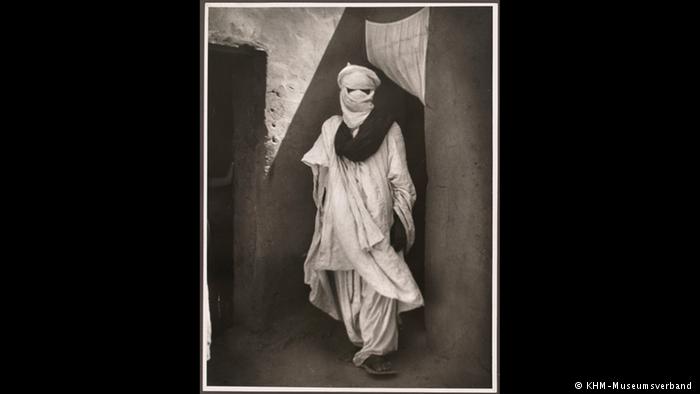
This photograph taken by the Viennese photographer Ludwig Gustav Alois Zöhrer shows a Tuareg man wearing the traditional face coverings of the North African nomadic pastoralists. The scarf, often indigo, is believed to keep away evil spirits. It is an important rite of passage into manhood when an adolescent male begins to wear it. Women, in contrast, do not usually cover their faces.
–
A personal undressing
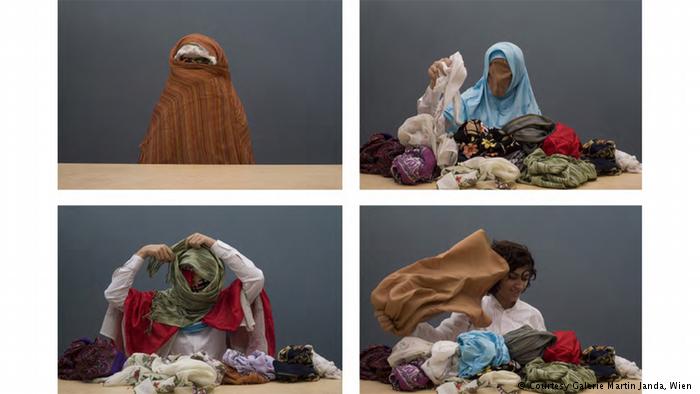
The various coverings worn by some Muslim women are often debated. Nilbar Güres tackles the theme in her 6-minute-long video “Soyunma/Undressing” (2006). In it, she unwraps layers of headscarves given to her by personally significant women, whose names she calls out. It is an autobiographical act that emphasizes how Muslim women, veiled or not, “foremost represent their individual selves.”
–
Abstracted depictions
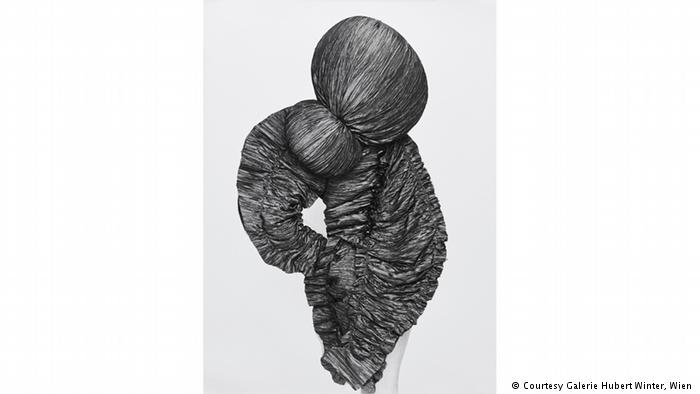
The Vienna exhibition also includes items that examine head coverings in an abstracted manner. This silver gelatin print by Austrian photographer Tina Lechner, entitled “Xiao,” recalls the back of a woman’s head covered by crinkly fabric that drapes down. Lechner is known for her sculptural-based photography that often examines cultural constructions of femininity in a quasi-surreal manner.
–
Suzanne Jongmans’ old-new veil
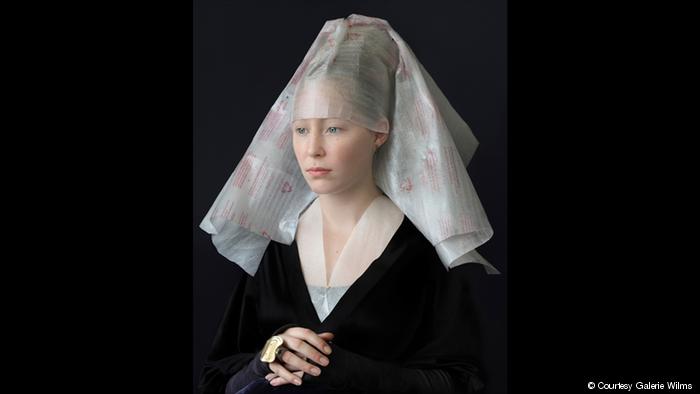
At first glance, Jongmans’ photo “Mind over Matter — Julie, Portrait of a Lady” could be mistaken for von der Weyden’s mid-15th century Dutch masterpiece “Portrait of a Lady.” But look closely: The sitter’s veil is made of packing materials, her ring is a can lid, and her bodice is held closed by a single sewing pin. Jongmans’ use of recycled materials reflects on how we gauge value and beauty.
–
From conservatism to emancipation
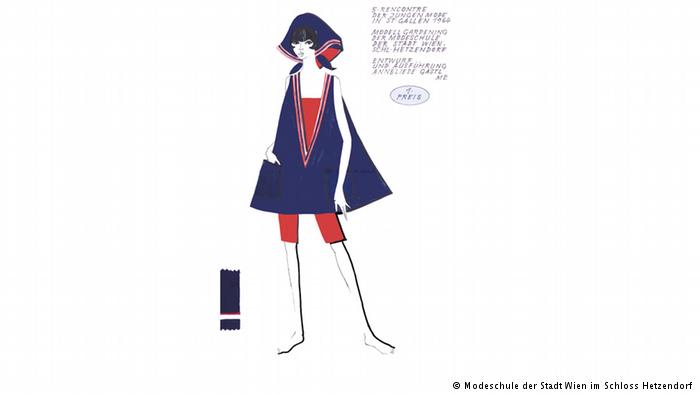
In pre-WWII authoritarian Austria, a woman wearing a headscarf with the traditional Dirndl dress was seen as rooted, practical and patriotically conservative. By the 1950s, however, the headscarf had transformed into a luxury item. Often made of silk and featuring prints, it embodied female elegance and emancipation. Above, the 1st-prize entry for a 1964 fashion competition features a headscarf.
–
Haute couture coverings
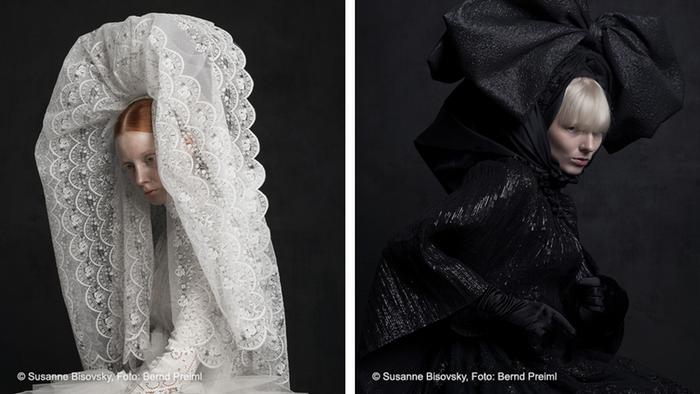
Since 2003 Austrian designer Susanne Bisovsky has been known for her “Viennese Chic” collections: billowing lace and floral-filled creations drawing heavily on historic Austrian fashion and designed for the modern Viennese lady. Her 2018 collection (above) was designed especially for the Weltmuseum’s show and features impressive headpieces. “Veiled, Unveiled” runs until February 26, 2019.
Author: Cristina Burack






